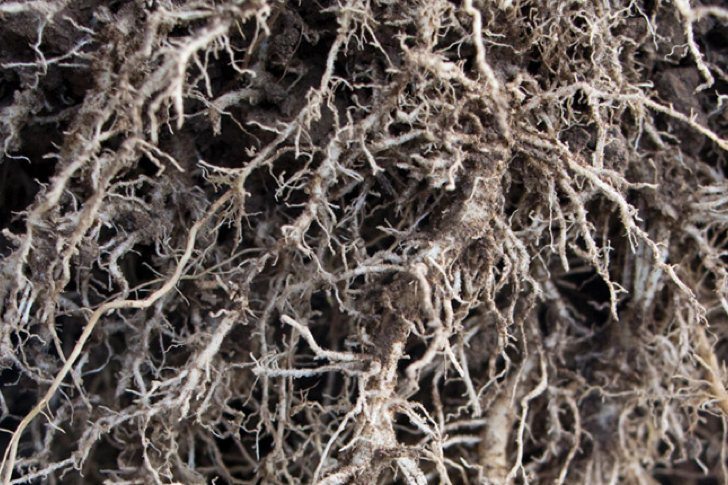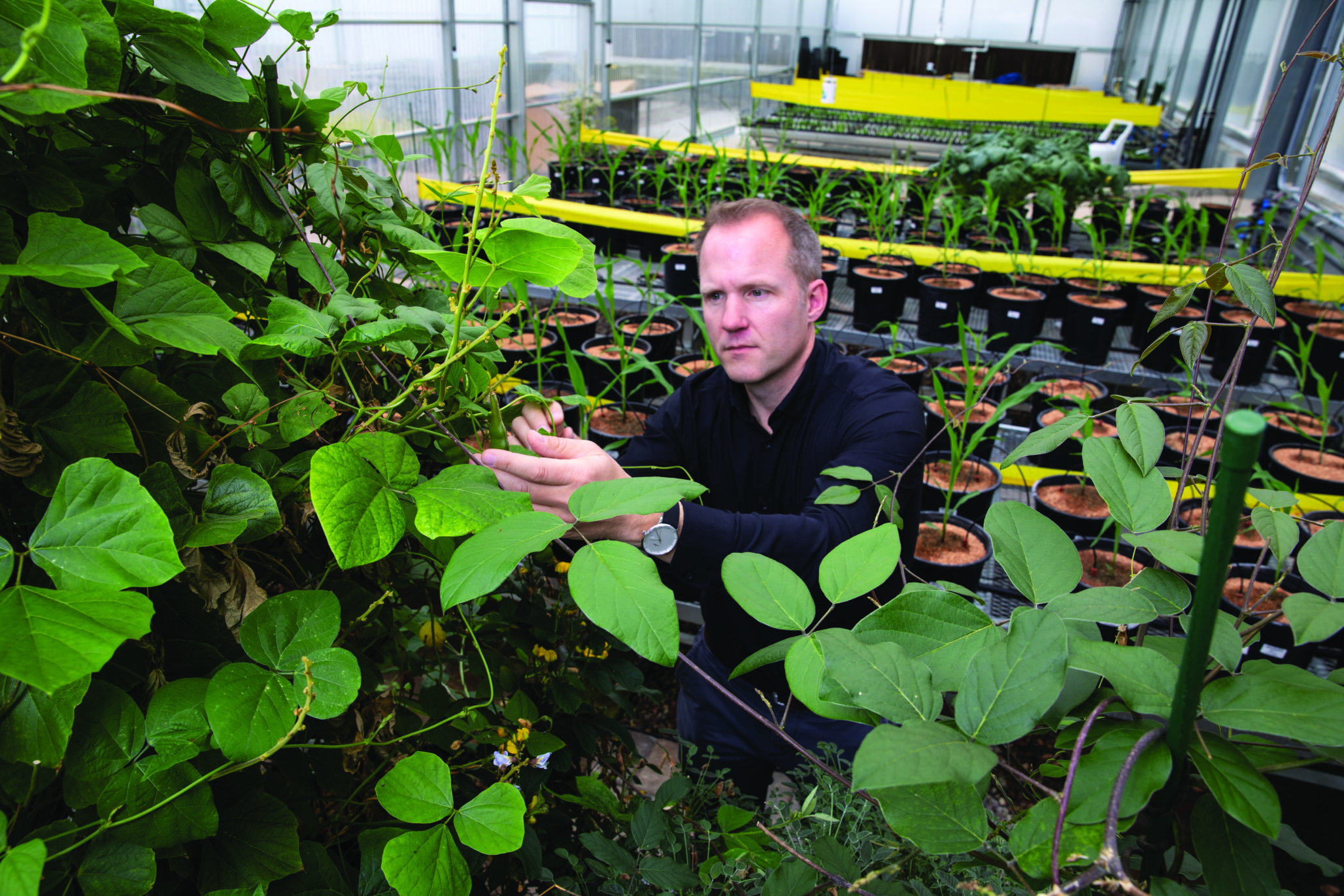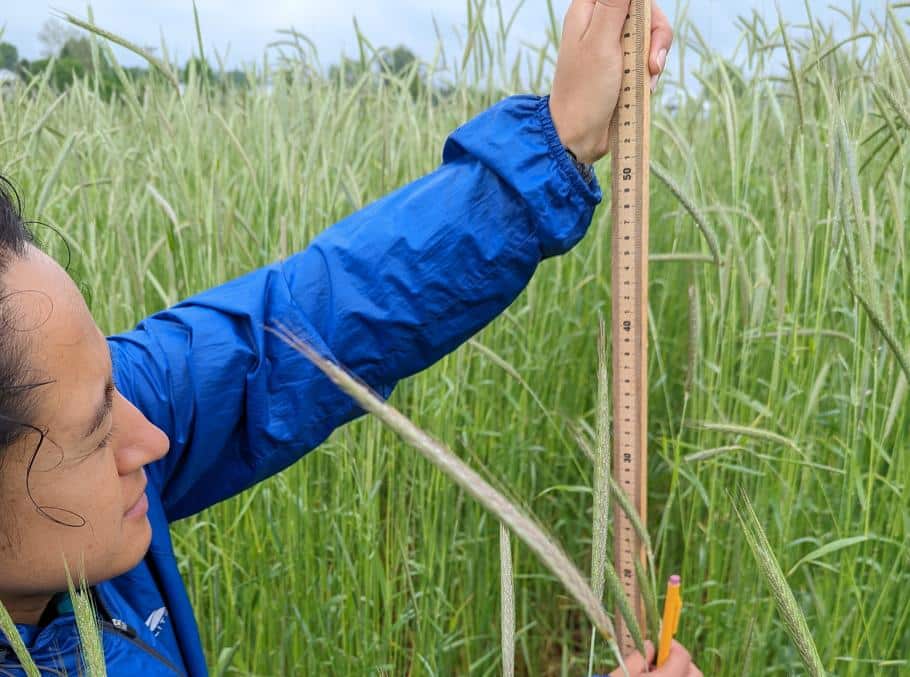Nitrogen is one of the largest expenses on most farms and plants respond quickly to additions and deficiencies in the field. Yet in areas that we are not farming, plants seem to be growing and thriving without additions of synthetic fertilizer. What is happening?

In native plant stands, being either grass-based or treed, plant growth seems to be adequate to cover the ground and produce aboveground biomass. Where do these nutrients come from? Nature has evolved over centuries to have an elaborate system of plants capturing sunlight through photosynthesis creating sugars that the plant can use for plant growth and as exudates to feed microbes on the leaves, stems and roots. The exudates released through the roots feed soil microbes that will in turn free up soil-bound nutrients for the plants.
There are free living nitrogen-fixing bacteria in the soil. They will fix atmospheric nitrogen as long as the amount of free nitrogen is low in the soil solution. If there is excess nitrogen from adding synthetic nitrogen, free living nitrogen fixers get the signal to go dormant and not add any more nitrogen to the system.
In the case of mycorrhizal fungi, the plant allows the fungi to grow inside of its root tissue, extending the hyphae out into the soil. This increases the soil volume the plant has access to in order to obtain nutrients and water. In exchange for carbon from the plant and signals of what the plant requires, the mycorrhizal fungi will deliver those back to the plant.
It can also link two or more mycorrhizal fungi-friendly plants together, sharing nutrients and water between them. The hyphae network is present as long as it is being fed. Around the hyphae are other microbes that associate with the mycorrhizal fungi. Some increase phosphate solubility while others stop nitrogen sources being degraded to nitrate, to name a couple of functional associations.
Using cover crops will help nitrogen availability in a couple of ways. First it will offer hosts for mycorrhizal fungi, which is always a good thing. A living plant in the vegetative stage is also a positive option, tying up free nutrients and releasing root exudates to stimulate soil biology and creating good soil structure. Including legumes in the mix will ensure there are plants with nitrogen-fixing relationships with rhizobium. This is important as the legume nitrogen fixation tends to be greater in an agricultural system than the free-living microbes by themselves.
The reason synthetic nitrogen is used over biological nitrogen is predictability. Sir Albert Howard saw this back in the early 1900s; farmers wanted the easy button even though synthetic nitrogen applications turn out to be only 50 per cent effective in most cases.
But because agronomists are trained with traditional soil tests, nitrogen supply is determined by looking at nitrate levels and then adding in the estimated nitrogen release (ENR) based on organic matter levels. In reality, the nitrogen cycle is a bit more complicated.
Biological nitrogen is better to have as a nitrogen source in most cases. Legumes do not create severe competitive stress on a cash crop as long as the legume growth does not overtake the grass. Legumes have co-evolved with grasses to grow together, sharing nutrients and water via the soil biology providing the grass with a nitrogen source in exchange for sharing phosphate, which is required to fix nitrogen in the nodules.
It is quite possible to reduce the amount of fertilizer being applied in most crop rotations, especially nitrogen. Using legumes as cash crops in rotation or including legumes as an intercrop or relay cover crop will generate nitrogen for the cropping system.
Adding livestock grazing prior to seeding crops that need a lot of nutrients is another good way to import nutrients if required. It comes down to old-time agronomy to create a system to supply nutrients for cash crops efficiently.
That means keeping costs in line so if there is a way to get nature to supply inputs like nitrogen, it will be worth looking at.
—Elmy is founder of Cover Crops Canada. His book Cover Cropping in Western Canada is available through Friesen Press, Amazon, and digitally through Apple Books, Kindle, and Google Play. For more info on Cover Crops Canada visit covercrops.ca













